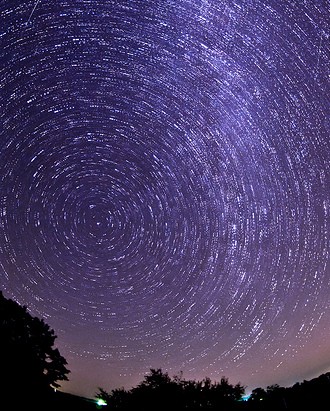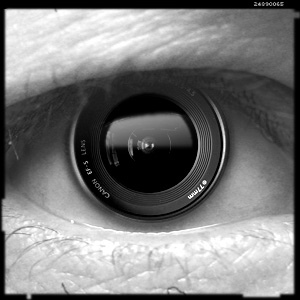The Sound of . . . Sound in Novels
Sound may not be something writers pay much attention to when they work on their novels. Of course, there usually is a significant amount of dialog, and there may occasionally be found a noise shown in the scene, such as a branch cracking underfoot, the whoosh of an arrow zipping by, or the hiss of a snake. But other than the obvious, basic sounds, novelists don’t usually think much about this sensory element. But by looking at some of the ways filmmakers deal with sound, we can see many possibilities of how writers might enrich their books with this often-ignored component.
In the book Cinematic Storytelling by Jennifer Van Sijll, we read this about sound: “Sound effects are as much the purview of the writer as are visual symbols . . . Sound effects can also suggest an extended aural metaphor. They can add layers to a film that are hard to achieve in other ways. Sound effects can be obvious or quite subtle. They can intentionally draw attention to themselves or manipulate with stealth. They can expose, disguise, suggest, establish, or reveal.”
Exploring the Perception of Sound
Writers are encouraged to infuse their novels with sensory details to better immerse the reader in time and place, and sound is a powerful sense. I’ve often envisioned the day when readers will be able to read my novels with my original soundtrack playing as they “turn pages” on their iPad, the music adjusting in speed to the speed of the reader so that the climactic symphonic rise pairs with the high moments of my scenes. I’ve often thought of talking to some of my Silicon Valley neighbors who design apps to work with me to create a prototype, but I imagine someone is already working on this.
Movie scores affect viewers powerfully, eliciting strong emotions that can make moviegoers cry and despair or feel their hearts soaring with joy. There are movies I watch in which, when a certain piece or music or song begins to play, I start blubbering (like at the ending of Fly Away Home when Mary Chapin Carpenter starts singing “Ten Thousand Miles.” I get choked up just writing this, and that song in on my iPod and has been played at least a thousand times over a thousand miles. I probably would have loved this song regardless of its place in the movie, but when pairing a tremendously emotional movie with a gorgeous, meaningful song, an exponential emotional explosion occurs. But until the day novels are paired with their own music scores that play while being read, writers will have to make do with other ways to portray music and sounds in their novels.
Many novelists mention various sounds occurring around their characters in scenes, and often to great effect. Good writers will evoke that unique sense of place by the clink of glasses, the tinkle of happy banter, the drip of a faucet in an abandoned building, the screech of tires from a car racing away from the scene of a crime. If you haven’t spent much time thinking about sounds and their potential effect on a scene, I would recommend you do so.
Three Types of Sounds
Filmmakers classify sounds into three categories.
- First are natural sounds, ones that would normally be found in a particular environment, and those are the ones most novelists include in their scenes.
- Second are “expressive” sounds, and those are normal sounds altered by the perception of the character. For example, a phone could begin ringing louder and louder until the character either notices it or starts to scream in anger. Again, it’s a matter of perception. In a novel, a harried new mother could be trying to soothe her crying baby, whose cries seem to grow louder and louder, along with the TV blaring and someone banging on the door, and even the tea kettle screaming. All this can be amplified into “expressive” sounds to portray her tension, exasperation, and growing panic.
- Third are classified as “surreal” sounds. These externalize a character’s inner thoughts, nightmares, wishes, or dreams. They are not real sounds; they are imagined. Think of a man who does something stupid and hears everyone laughing at him although their faces are emotionless. Novelists can show their characters perceiving these surreal sounds, for their characters hear them, whether they are real or not.
Emblematic Sounds
Sounds can be emblematic. The hum of a mosquito can be deafening and a recurring motif in an image system. Even the jangle of keys can be terrifying, as seen in the opening scene of the movie E. T. as the terrified little extraterrestrial runs from the men chasing him. You’ve probably watched movies in which all the sound is muted except for one isolated sound.
I took particular note of sound the first time I saw The Fellowship of the Ring (2001) at the moment right after Gandalph falls with the Balrog into the depths of Moriah. Peter Jackson, director, not only slowed the film action way down as Strider grabbed Frodo and forced him out of the mines into bright sunlight but also muted every sound—even Frodo’s loud cries, which are evident by the Close-up on his face, and all the loud noise of a gazillion orcs coming at them—except for the swoosh of the arrows flying past them all.
The sound engineer did a brilliant job with this effect. There is a softness to the sound, as one arrow then another flies past their heads, which helps to skew time and also show Frodo’s numbness to what has just happened. He can barely hear anything around him as his grief and horror strike hard. A beautiful cinematic use of sound.
You Can Do It Too
This isn’t all that hard for novelists to emulate. By describing just how a character is perceiving the sounds around her, writers can essentially do the same. One sound out of many can be singled out, and that sound can even be symbolic or work as a metaphor as part of the image system. A loud heartbeat can override all other noises. You may have seen this done in movies. A spaceman in a spacesuit is trying to fix something outside a station orbiting a planet hearing his heart beating hard. As danger approaches, the heart rate speeds up, gets louder. It’s all he can hear. Sounds underwater are distorted and muted, and a drunk or drugged character may hear sounds that aren’t really there.
Think of ways sounds can be used as symbols or motifs in your novel. A ringing bell can be part of a pastoral landscape coming from a church nearby, but it can also mark time, and symbolize time running out.
Wear the Foley Artist’s Hat
Foley artists are the ones responsible for sound effects in a film. They usually begin their work by watching the film to determine which sounds need to be replaced or added. Novelists can do similarly as they work on revisions. I laugh sometimes at TV shows that use repeated trademark sounds perfunctorily, such as when a medieval village scene begins and the expected chicken crowing occurs. Or when horses are shown, one always knickers or whinnies. Foley artists try to add in those natural sounds to bring more realism to the scene. There might be added crowd noises, the sound of glasses clinking, the tick of an old grandfather clock, footsteps that need to go along with the movement of characters.
Which might make a novelist think:
- How much attention should be paid to sound in my novel?
- How can I think like a Foley artist and go through to add sounds the characters would notice and that would enhance each scene?
- Are there places where it would be appropriate for me to use enhanced, expressive, distorted, and surreal sounds to add tension?
Randy Thom, a Foley artist who has received numerous Academy Award nominations for sound in feature films, says, “Amplified reality is the basic goal in action-adventure and sci-fi sequences. Forget what real sounds are like and start thinking about what it would feel like in a nightmare. . . . like an engine sounding like a growling beast. The essential emotional quality of the sound is virtually all that matters.”
He makes this succinct point: “Storytelling is about making connections between characters, places, ideas, and experiences. It isn’t enough for a sound to be merely loud or high fidelity, or digital. It needs to remind you of, resonate with, other sounds places, feelings, in other times.”
This is good advice for novelists seeking to add touches of sound with a Foley artist’s flair. So as you create and revise the scenes in your novel, try to wear this hat for a while and infuse your story with sounds in cinematic fashion. Just one more cinematic secret that will help supercharge your novel.
This week, think about all the various sounds that you might need to bring out in your novel. You probably already have the basic ones, but as you go through each scene, think about other sounds your character might hear, especially sounds that might evoke an emotion in your character, or have symbolism or significance. Can you think of one sound that might work as an emblematic sound in your image system? Share your discoveries in the comments.












Love this post! As someone who is naturally very much an ear person, I’m always fascinated by sound of any sort. Because sounds are the first thing I usually notice about any given situation, I usually put that into my writing to one degree or another.
I once wrote a short story heavily about sound, about a girl like myself who noticed sounds around her more acutely than others; I haven’t gotten it published yet, but everyone who’s read it has told me it’s one of the most beautiful stories I’ve written.
Thanks for these tips and insights!
i would love to read your story.
This is a wonderful, thought provoking post that takes the writer’s mind into a new dimension. A fresh approach. Nasal spray for the brain 😉 Thanks for addressing a little-discussed element to improve our writing.
Loved this piece. Opens up the writer’s mind of the value added sound. Technically it can be done on audiobooks with embedded sounds software.
As an author and screenwriter who struggles with NOT USING effects in screenplays, this is like something in between. Directors, film makers DON’T like elements such as these when they work a script, and want all artistic attributes left up to them. But as we all know, adaptations of novels are fewer and fewer these days.
But the sound effects could be fun!
As another thought which we discussed in my screenwriters group, is bringing back live radio plays…where the novel is read with local actors, and uses state of the art sound effects software.
Great article. My critique groups has pointed this out to me several times…well really…all the time. I’m more intellectual with my writing. Thank God for my more emotionally intuitive friends.
C.S. You mention looking forward to the day that you could incorporate sound into your ebooks. Have you heard of Immersedition/Amanda Havard? She and her father launched Chafie Creative Group in 2010. A publishing company for Transmedial EBooks.
Thanks, Shawn. I haven’t heard of that but will check it out. I am sure in a few years all ebooks will come with music.
I just started reading your posts and every one has been excellent advice. I’m finishing (what I hope to be) the last edits on my first work of fiction and your advice is fast becoming invaluable! I will include this “eye for sound” in my final brushing of the pages.
Glad you found this blog! There is a ton of great advice and instruction in the past posts, so dig in!
I recently saw Captain Philips, and it made such an incredible use of sound–and silence. At the ending (no spoilers!), the most dramatic and emotional part of the entire film, there is no music, no sound, aside from Tom Hanks sobbing. It was simply stunning.
I know he’s an oldie, but Edgar Allan Poe is a goody. Most of his tales use sound more than any other sensory detail. (Tell-Tale Heart is an obvious story.)
When it comes to my writing, I think mostly about how it would impact. I have a tendency to overuse sound, so silence is something I look to put in. How can I make this scene more powerful? Will sound even help? If I’ve focused on sound for the scenes surrounding it, I try to contrast that with focus on other senses–smell, taste, sight, touch.
One of my novels, my character and his comrade-in-arms get separated. The scene where they part ways is full of sound–screaming, gunfire, snarls from the enemies, thunder, and rushed footsteps–but the next scene focuses on my character’s anguish through the lack of sound. It represents numbness throughout the story. Silence is emblematic of the “pain too great for words,” only it’s too much for any sounds.
Thanks for the insights! Typo – Gandolph should be Gandalf. Unless you’re referring to a Wizard of a different color.
Thanks for that!
Excellent post. Thank you for your insights, C.S.!
awesome post the same can be said about music not much of it used in novels either and can be just as important as sound…now that sounds a little weird…
I love the article, and it makes some great points.
But I have to disagree that all ebooks will come with music in the future.
Reading is reading, not listening to music. If a writer can’t make music with words, a writer needs to write better.
My reading experience would be completely ruined by music, and I won’t be having music on while I’m reading, or publishing any book along with music.
really liked your article, had gotten a heads up about it from an IndieUnlimted author (aronjoice)
and esp liked your quote from randy, “Amplified reality is the basic goal in action-adventure and sci-fi sequences. Forget what real sounds are like and start thinking about what it would feel like in a nightmare. . . . like an engine sounding like a growling beast. The essential emotional quality of the sound is virtually all that matters.”
I think in re to a music score to go along with one’s book, there’s probably room for, and enjoyment of, with and without it –
there’s lots of research showing how we respond to audible music, so that’s one thing
and there’s other research showing how the brain can, when properly cued when reading, bring up all the senses, activate and merge memories, all sorts of stuff 😉
but i’m not for or against either, but rather think each has its place, including versions both ways
anyway, glad i found your article, thanks so much!
One of my favorite books is Cry to Heaven by Anne Rice. I borrowed it from the library and loved it so much I bought a copy to keep. My sister asked why I’d buy a copy after reading it. I told her there were two reasons. One, I think the highest compliment we pay to a writer is to buy his or her books, and two, the music was beautiful. She looked at me funny for a moment, and said, “You heard music?” Yes, I had. It wasn’t the description of it so much as the way she used the concept of it in her book. Sound was integral to the story. Great post. Thank you.
I’m not familiar with that book. Thanks for sharing that! Music is tricky to describe well in fiction.
Wonderful explanations and so many things I do (and don’t) in my writing that I had never broken down to examine before. In the middle of editing, so plan to keep these “sound” ideas in the back of my mind as I go through. Perfect timing (for me) for such a great post.
Great post, and thank you for sharing! I was looking for a way to distinguish sounds in literature, and this helped me narrow it down.
Can you name more authors (specifically short story writers) who integrate sound into their works most effectively? Coryl o’Reilly mentioned Poe (great example!), but can anyone think of some other authors? I’d love to read them.